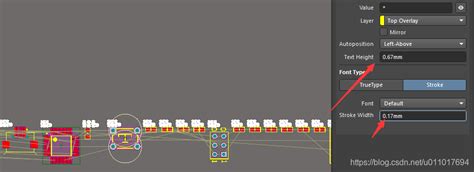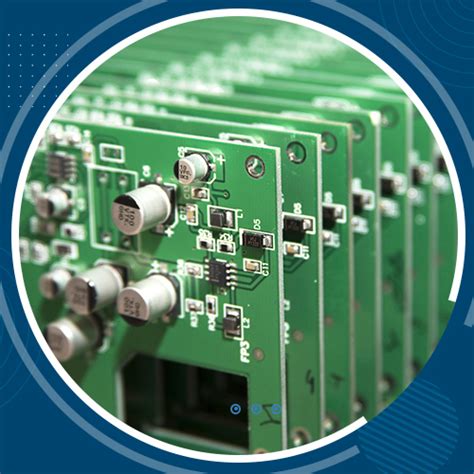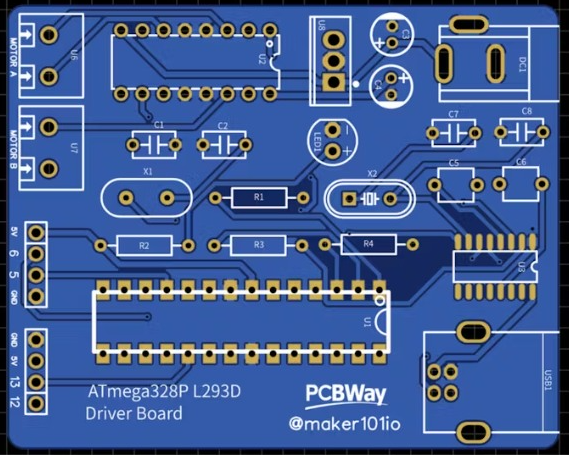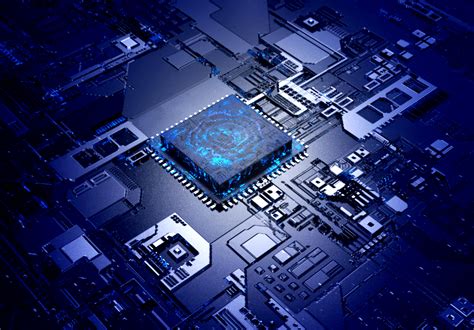Revolutionizing Electronics: The Future of Automated Circuit Board Assembly
Key Takeaways
“Revolutionizing Electronics: The Future of Automated Circuit Board Assembly” highlights substantial advancements that are reshaping pcb assembly and PCBA processes. Automation emerges as a pivotal force in enhancing manufacturing efficiency and precision, reducing overall costs while setting new benchmarks in the industry. By leveraging cutting-edge technologies and AI-driven processes, companies can significantly minimize human error, thereby improving the reliability and quality of circuit boards. These automated systems not only streamline operations but also accelerate the time-to-market for innovative products. Consequently, businesses can respond more swiftly to market demands and maintain a competitive edge. The integration of these advanced methodologies within electronics production promises a future where manufacturing is faster, more accurate, and economically advantageous.
Introduction to Automated Circuit Board Assembly
In recent years, the landscape of electronics manufacturing has been transformed by the advent of automated circuit board assembly (PCBA). This innovative approach leverages advanced machinery and sophisticated software to streamline the production of printed circuit boards, commonly known as PCBs. The integration of automation into PCB assembly brings a myriad of benefits, such as enhanced precision, greater efficiency, and significant cost savings. By minimizing human intervention, automated systems reduce the likelihood of errors, ensuring that each board meets stringent quality standards consistently.
“Automation in PCBAs not only impacts the speed and accuracy of production but also allows for scalable solutions that are adaptable to various manufacturing needs.”
Furthermore, the application of automation in this field enables rapid prototyping and faster time-to-market for new products, which is crucial in the highly competitive electronics industry. Companies adopting these technologies can respond swiftly to market demands and innovate continuously without compromising on quality or increasing operational costs. This transition towards automated PCBA marks a pivotal shift in electronics manufacturing, setting new benchmarks for excellence and paving the way for future advancements.
Technological Innovations in Circuit Board Manufacturing
The landscape of PCB assembly is being dramatically reshaped by technological innovations that are redefining how circuit boards are produced. One of the key advancements is the integration of automated equipment that can swiftly and accurately place components on a board, exceeding human capabilities both in terms of speed and precision. This transition to automation not only enhances production efficiency but also significantly reduces errors, leading to higher-quality PCBs.
Moreover, the rise of AI-driven processes in PCBA is setting new benchmarks in the industry. These intelligent systems can autonomously adapt to variations in the production process, ensuring consistent output while minimizing downtime. Additionally, technologies such as 3D printing are being increasingly utilized to create complex PCB structures that were previously challenging or impossible to manufacture with traditional methods.
Below is a comparative table illustrating some key benefits:
| Traditional Manufacturing | Automated Manufacturing |
|---|---|
| Manual component placement | Automated component placement |
| Higher error rates | Reduced error rates |
| Slower production speeds | Increased production speeds |
| Limited design flexibility | Enhanced design flexibility |
These technological advancements are not just incremental improvements but represent a paradigm shift in how circuit boards are assembled, leading to a more robust and adaptable manufacturing ecosystem. Such innovations position companies to not only meet current demands but also adapt swiftly to future technological trends, ensuring sustainable growth and competitiveness.
Enhancing Efficiency and Precision through Automation
The implementation of automation in pcb assembly has significantly improved both efficiency and precision in the manufacturing process. Automated systems and robotics allow for meticulous placement and soldering of components, reducing the margin of error that human operatives might introduce. This shift not only ensures a higher yield rate but also enhances the overall quality of the produced pcba. By minimizing manual intervention, manufacturers can maintain consistent standards across different production runs, thereby ensuring product reliability and customer satisfaction. Moreover, automated systems can operate around the clock, leading to increased production rates without compromising on precision. The integration of advanced vision systems further bolsters accuracy by detecting and rectifying misplacements or defects in real-time. As a result, companies benefit from reduced wastage of materials and time, ultimately delivering more cost-effective solutions to their clients. Thus, automation stands as a cornerstone in modern circuit board manufacturing, revolutionizing how industries approach pcba processes with greater efficiency and faultless precision.
Cost-Effectiveness and Economic Benefits
One of the most compelling advantages of automated pcb assembly is its significant cost-effectiveness. By integrating state-of-the-art machinery and AI-driven technologies, companies can dramatically lower production costs. Automated pcba processes reduce the reliance on manual labor, which not only minimizes labor costs but also decreases the risk of human error. This precision ensures fewer defective units and less wasted material, translating into considerable savings over time. Furthermore, automation enables manufacturers to operate around the clock without fatigue-related performance drops, increasing production rates and maximizing output. The streamlined operations that automation offers also facilitate faster turnaround times, allowing new products to reach the market quicker than ever before. This accelerated time-to-market can provide a competitive edge in the rapidly evolving electronics industry, making investments in automated pcb assembly not only economically sound but strategically advantageous.
AI-Driven Processes in Electronics Production
The integration of AI-driven processes in electronics production is transforming pcb assembly by enhancing various stages of manufacturing. These advanced technologies enable real-time monitoring and quality control, ensuring that each piece of the pcba meets the highest standards of precision and functionality. Machine learning algorithms are employed to optimize production workflows, predict potential failures, and automate decision-making processes. By leveraging AI, manufacturers can significantly reduce human intervention, thereby minimizing errors and increasing consistency in output. Additionally, these technologies facilitate the handling of complex design specifications that would be challenging for manual assembly. The result is a more streamlined operation where defects are detected early in the process, leading to reduced wastage and faster time-to-market for new products. Innovations such as robotic assembly lines and intelligent inspection systems are also playing a crucial role in elevating the capabilities of automated circuit board assembly, setting new benchmarks for efficiency and cost-effectiveness in the industry.
Reducing Human Error with Automation
One of the most significant advantages of automated circuit board assembly is its ability to drastically reduce human error. Traditional methods of circuit board assembly often involve intricate tasks that can be prone to mistakes when performed manually. With the advent of automation, precision and consistency in PCB assembly have reached unprecedented levels. Robots and AI-driven systems are deployed to handle delicate components, ensuring each piece is placed accurately and efficiently. This minimizes the risks associated with manual handling, such as misalignment or incorrect soldering. Furthermore, PCBA systems can continuously operate under optimal conditions, reducing downtime and maximizing productivity. By harnessing cutting-edge technologies, manufacturers can ensure higher quality standards, leading to fewer product defects and recalls. In essence, automated PCB assembly not only enhances operational efficiency but also significantly improves overall product reliability and performance by mitigating human error.
Accelerating Time-to-Market for New Products
The integration of automated circuit board assembly (pcba) processes into electronics manufacturing is drastically reducing the time-to-market for new products. By leveraging state-of-the-art machinery and AI-driven techniques, companies can achieve higher throughput with unparalleled accuracy. This efficiency gain not only decreases development cycles but also enables businesses to respond swiftly to market demands and technological advancements. Automation minimizes manual interventions, significantly lowering the potential for human errors and rework, which can often delay product launches. Furthermore, streamlined operations facilitated by advanced AI algorithms ensure that production is not only faster but also more consistent in quality. As a result, manufacturers are better equipped to roll out innovative products ahead of competitors, capitalizing on market opportunities more effectively. This transformation in pcb assembly practices underscores a new era where agility and precision are paramount to success in the electronics industry.
Future Prospects and Industry Trends
The future of automated circuit board assembly (PCBA) is poised to be transformative, driven by ongoing advancements in robotics, machine learning, and material sciences. Companies are increasingly adopting automated pcb assembly systems to remain competitive, streamline production, and ensure higher standards of quality. Emerging trends include the development of more sophisticated AI algorithms that can optimize the placement of components in real-time, thereby enhancing precision and reducing waste. Additionally, the advent of flexible electronics and the integration of IoT technologies are setting new benchmarks for how PCBs are designed and manufactured. As these innovations gain traction, we can expect a substantial reduction in production timelines and an increase in customization capabilities. Ultimately, these trends herald a new era for electronics manufacturing, one characterized by heightened efficiency, lower costs, and unprecedented innovation.
Conclusion
The advancements in automated circuit board assembly are reshaping the landscape of electronics manufacturing. With continuous innovations and the integration of AI-driven processes, the industry is witnessing significant improvements in efficiency, precision, and cost-effectiveness. These technological strides are not only reducing human error but also accelerating the time-to-market for new products, thus ensuring that manufacturers remain competitive in a rapidly evolving market. Industry trends indicate that PCB assembly will continue to evolve, setting new benchmarks for production quality and performance. As companies increasingly adopt these cutting-edge technologies, they can streamline their operations and enhance their economic outcomes, paving the way for a more dynamic and robust electronics sector.
Frequently Asked Questions
Q: What is PCB assembly (PCBA)?
A: PCB assembly, or PCBA, refers to the process of mounting and soldering electronic components onto a printed circuit board. This essential step brings the board to life, enabling it to perform specific functions within electronic devices.
Q: How does automated PCB assembly improve efficiency?
A: Automated PCB assembly leverages advanced machinery and AI-driven processes to increase production speed and precision. This reduces the time required for manufacturing while ensuring a higher consistency in quality.
Q: What economic benefits does automated PCBA offer?
A: Automated PCBA can significantly lower production costs by minimizing human labor, reducing material waste, and improving overall process efficiency. These savings can then be passed on to consumers or reinvested into further technological advancements.
Q: How does automation reduce human error in PCBA?
A: By utilizing precise machinery equipped with advanced sensors and algorithmic controls, automated PCBA dramatically lessens the risk of errors that are more common in manual processes. This leads to higher reliability in the final products.
Q: What future trends can we expect in PCB assembly?
A: The future of PCB assembly is likely to see increased integration of smart technologies, enhanced AI-driven quality checks, and further advancements in automation that will continually push the boundaries of what’s possible in electronics manufacturing.
Explore Cutting-Edge Automated PCB Assembly
For more information about cutting-edge automated PCB assembly solutions that can transform your production line, please click here.







